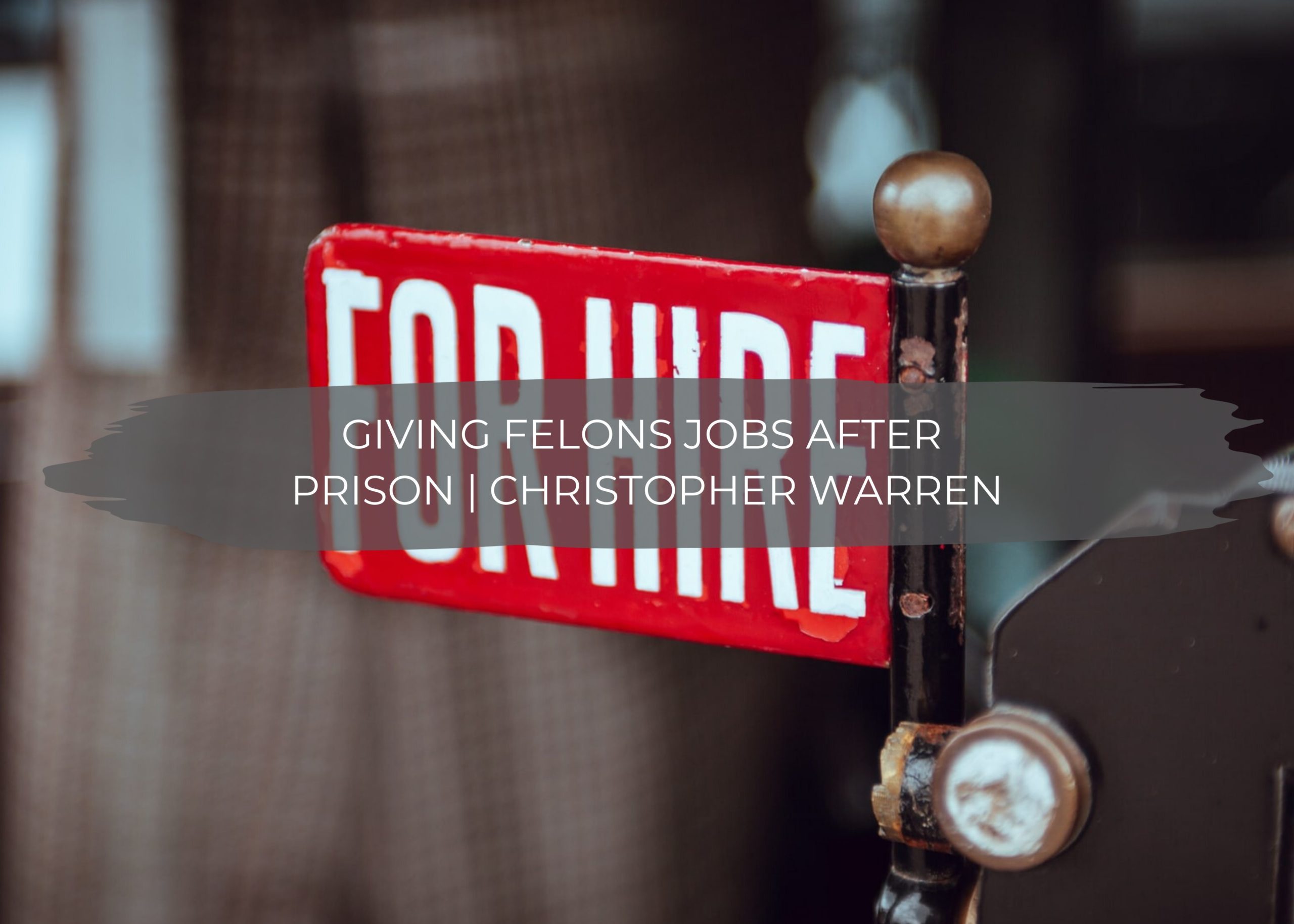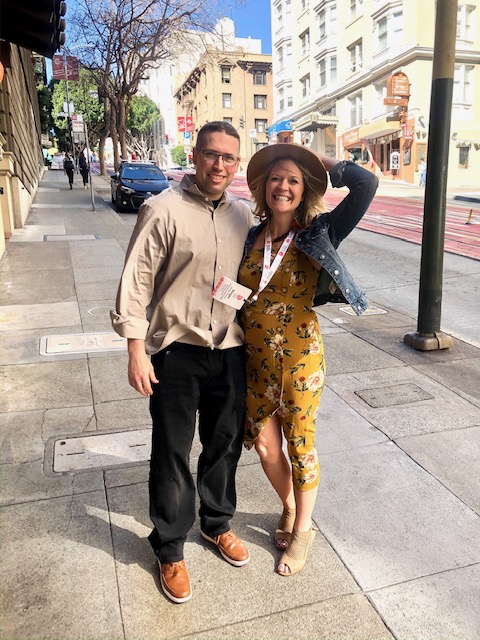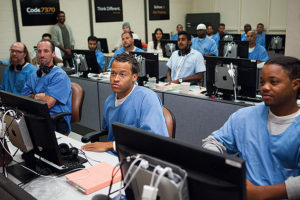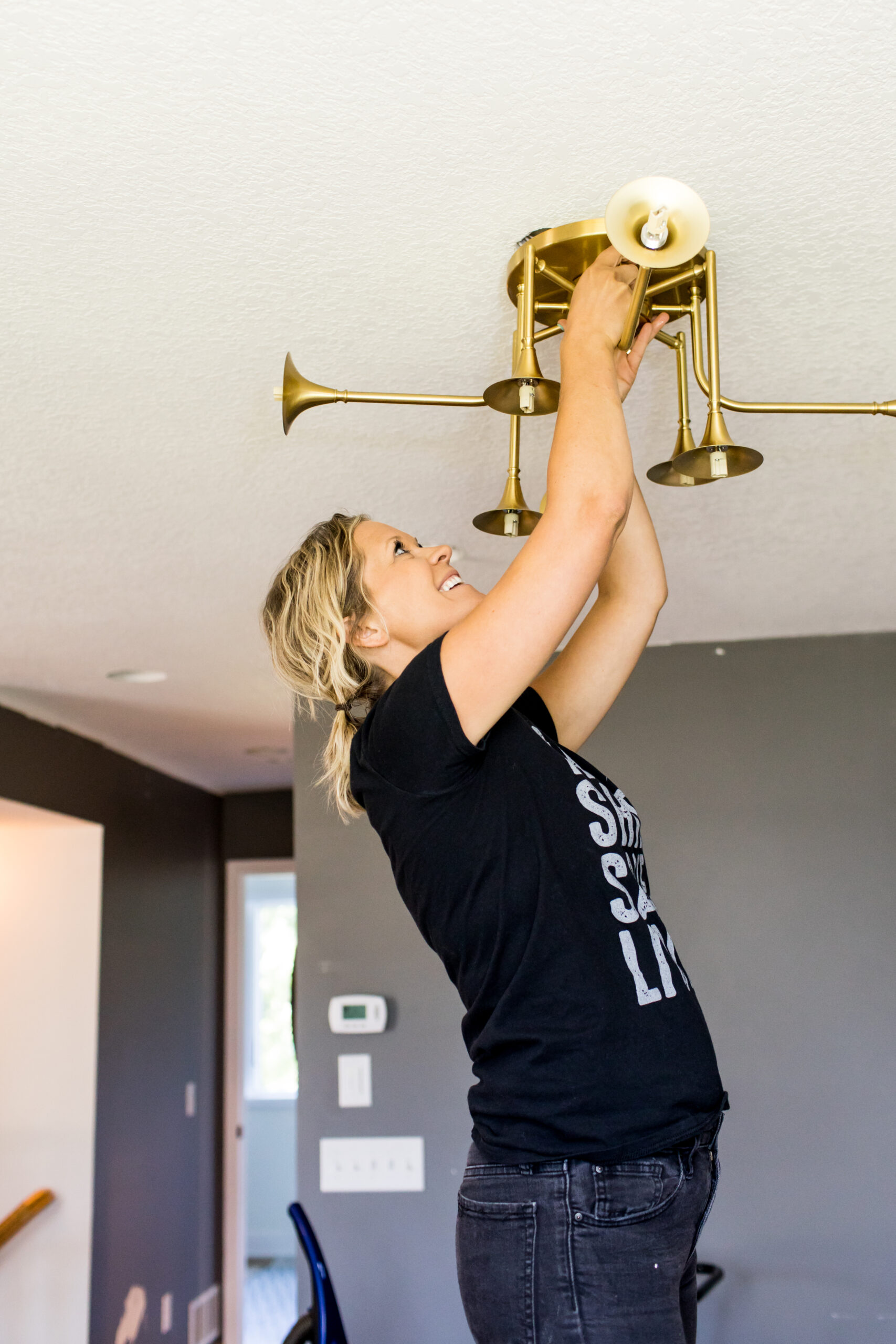
Work For Felons
It is a buzz theme: rehabilitation, not recidivism.
The concept means well, and when executed right, pays huge dividends for offenders, victims, and society. The thought runs something like this: while an offender is in prison, provide them with the training and educational skills along with cognitive-behavioral therapy. By providing both of these things to felons while incarcerated, their future success in work and interpersonal relationships decreases recidivism and the long-term cost of incarceration on society. This stands in stark contrast to the warehousing philosophy of incarceration that dominated much of the 1970s, 1980s, and 1990s.
In my eleven years in prison, I saw first hand the need for these programs in others…and for myself. Even though I came to prison for banking fraud, as a college drop-out, I needed these programs. No matter how we got here, almost all of us face the same challenges upon release. We all need to learn, to get degrees, to get fit, to live righteously.
But rehabilitation over warehousing is only the first part of the dance, and it takes two to tango.
The second part of the dance is upon release. Society, by way of its prison system, can rehabilitate as many inmates as it wants. Still, there must be private and public entities willing to hire felons fresh out of prison for that rehabilitation to be worth anything. Without that, taxpayer money and the inmate’s efforts are completely wasted.
What message do we want young people to hear? Once you’ve made a bad choice, you are permanently an enemy of the state? That seems to only justify continued criminal thinking. Or that we can all learn from bad choices and change? The latter seems like a message of encouragement and support.
I have chronicled my search for work right after release. The reality was a lot harder than I expected. A lot harder. Despite having earned five accredited college degrees in prison and having finished half of my Masters’s degree — which I am now finishing — my prospects were grim.
In five months, I’ve had several job offer,s including – (1) waiting tables, (2) customer service at the Rack @ Nordstrom, (3) commission only solar sales, and (4) private security for a local community center that specifically hired long-term inmates.
Life in the city is expensive, with the need to buy work clothes and even fast food meals running $15. The Rack offered decent base pay, but no cash tips, and I couldn’t start for three weeks. I needed cash, yesterday. The solar sales job wouldn’t have been approved by the prison system since it was only commissions and the security job was just unappealing. The job waiting tables gave me some salary and daily take-home cash, so that was the one I took.
But then there was construction2style and resilience2reform. They don’t just blog about this stuff, they believe in it, and they live it.
I will never forget the encounter that started things with me and construction2style.
Morgan Molitor, who heads up both of these sites with her husband, Jamie, reached out and started working with me on my writing and blogging. When she introduced me to a software platform called Buffer, she said, “Chris, this is how you manage social media accounts. You need to learn this.” And she gave me access to their account. She trusted me. She trusted a valuable business asset to a man who had gone to prison for fraud. That meant the world to me. And I knew right then that I was never going to let her or the business and community around that business down, and I wanted to learn as much as I could.
Next came Slack, a team communication, file sharing, and project management platform that allows work to be truly decentralized. In my previous career, I had run a 100-employee firm, but I had never seen this kind of technology. I soaked it in. This was way more valuable than my AS in Accounting that I earned in prison.
But the big one came when Morgan trusted me again and gave me user access to WordPress. Over 1/3 of the entire internet is built on WordPress engines. And just 60 days out of eleven years of prison in a day when FTPing your root index took a while, and you had probably manually written that HTML that you were now piping in over an expensive T1 or expensive DSL or cheap 56.6k….I was using Xfinity wifi in the heart of San Francisco to access a WordPress back end on a BlueHosted website (construction2style) that had some serious traffic on it.
And construction2style, and Resilience2reform, were trusting me with their WordPress platforms. I wasn’t their web designer. I wasn’t building them a website. But they let me learn. And I worked…I learned WordPress. I learned RankMath SEO. I saw and learned this thing called WooCommerce.
It was a huge gift. I watched Morgan’s videos and chats about earning money on websites. I read “How to launch a blog,” and again. Then I read my other friend’s free book online The Startup Playbook (avail at www.mxp.llc for free). I just couldn’t move fast enough.
All the while businesses were laughing me out the door when I applied to do operational or marketing work. I kept waiting tables. I kept writing and learning. Morgan met me in San Francisco and I just couldn’t wait for Noah to get out and Resilience2reform to get underway!
I told Morgan and Jordan about some of the problems I had getting work. They allowed me to put my work on the c2s blog on my resume, and Morgan wrote me a recommendation on my LinkedIn profile. I couldn’t have asked for more. This is unreal support to give to her brother’s friend from prison, and it shows how this team believes in Resilience2reform.
In four months, the level of trust construction2style and Resilience2reform had in me empowered me to learn Buffer, Slack, WordPress, Zoom, SEO, blog, and internet marketing principles. So when a friend referred me to an interview with a business consulting agency in Sacramento, I had skills and knowledge that helped me land a good-paying job.
So many things had to go just right for me. So many things that I had no control over had to fall into place for me to find myself where I am today. I’m employed, working in a field I enjoy, and I’m part of the c2s and R2r family. But what if my friend Noah hadn’t told Morgan I was a good person? What if Morgan had chosen not to trust me? What if I had never met Noah? What if I hadn’t worked to learn WordPress and Slack and Buffer? What if my friend hadn’t referred me to the interview? Any one of those things doesn’t happen, and the job doesn’t happen.
This chain of events shows how important it is that “rehabilitation” gets two big pillars of support to work. First, prison rehabilitation programs need to be practical and applicable to real-life work. Second, public/private partnerships and opportunities are needed to provide “runways” for other returning citizens coming home from prison.
There are some companies and state and local governments that are doing this well now. San Quentin offers a program that teaches inmates app-building programming languages instead of horticulture. The program is intensive and lets inmates work on real-world projects to build portfolios while they are incarcerated, so it is easier to find work upon release.
Private firms like Chckr work with the San Quentin program to help inmates transition to jobs and get through employment screening processes.
There are other companies like Dave’s Killer Bread, who hire felons right out of prison regardless of skill sets. (Look for a blog post soon on this great Oregon-based company!)
I know how lucky I am. Thank you to Noah, Morgan, Jamie, Jordan, and the entire team behind construction2style and Resilience2reform. You believe and live what you say. Your belief in me personally is a principle reason I currently live a blessed life. I look forward to the journey of helping others on their path forward as you have helped me.
Signing off from Northern California,
Chris Warren







